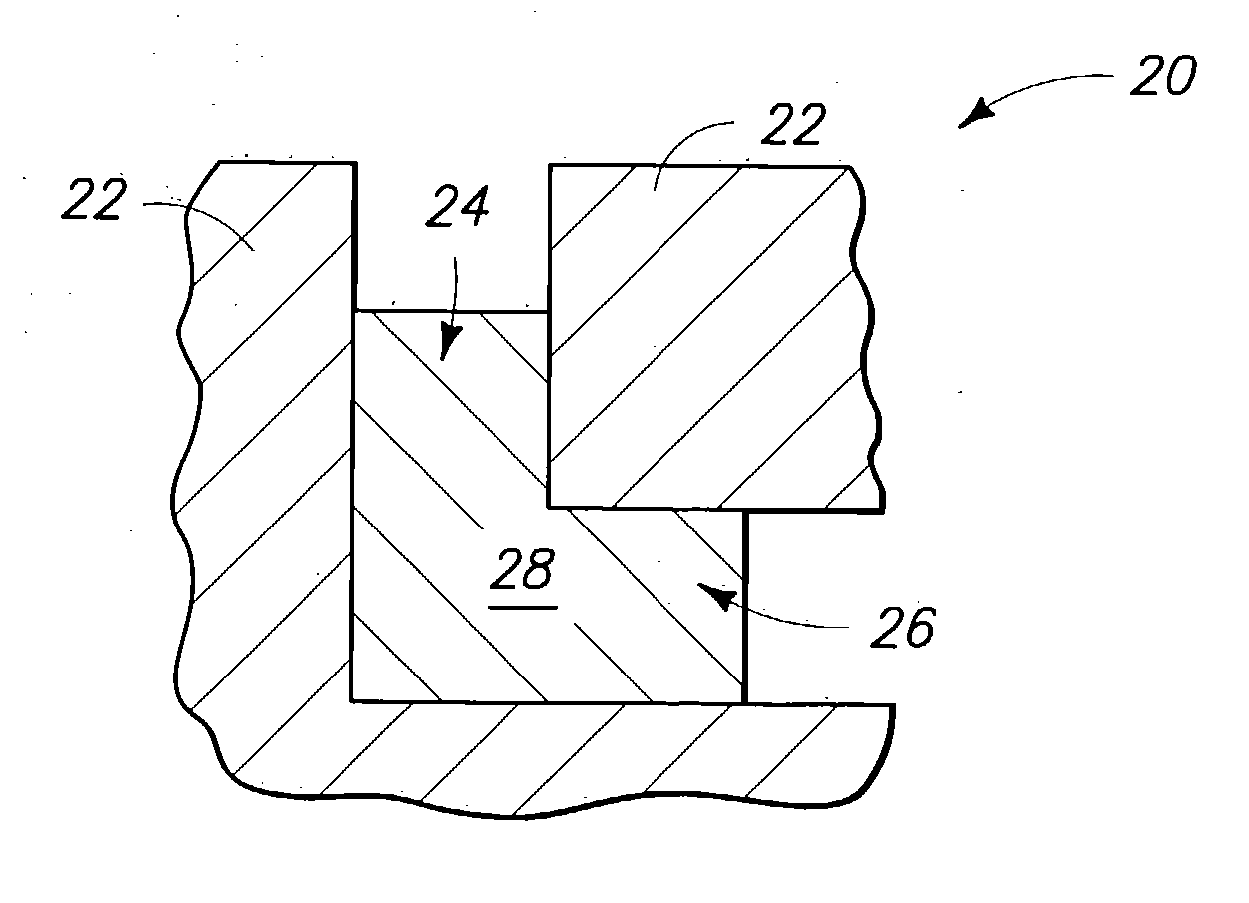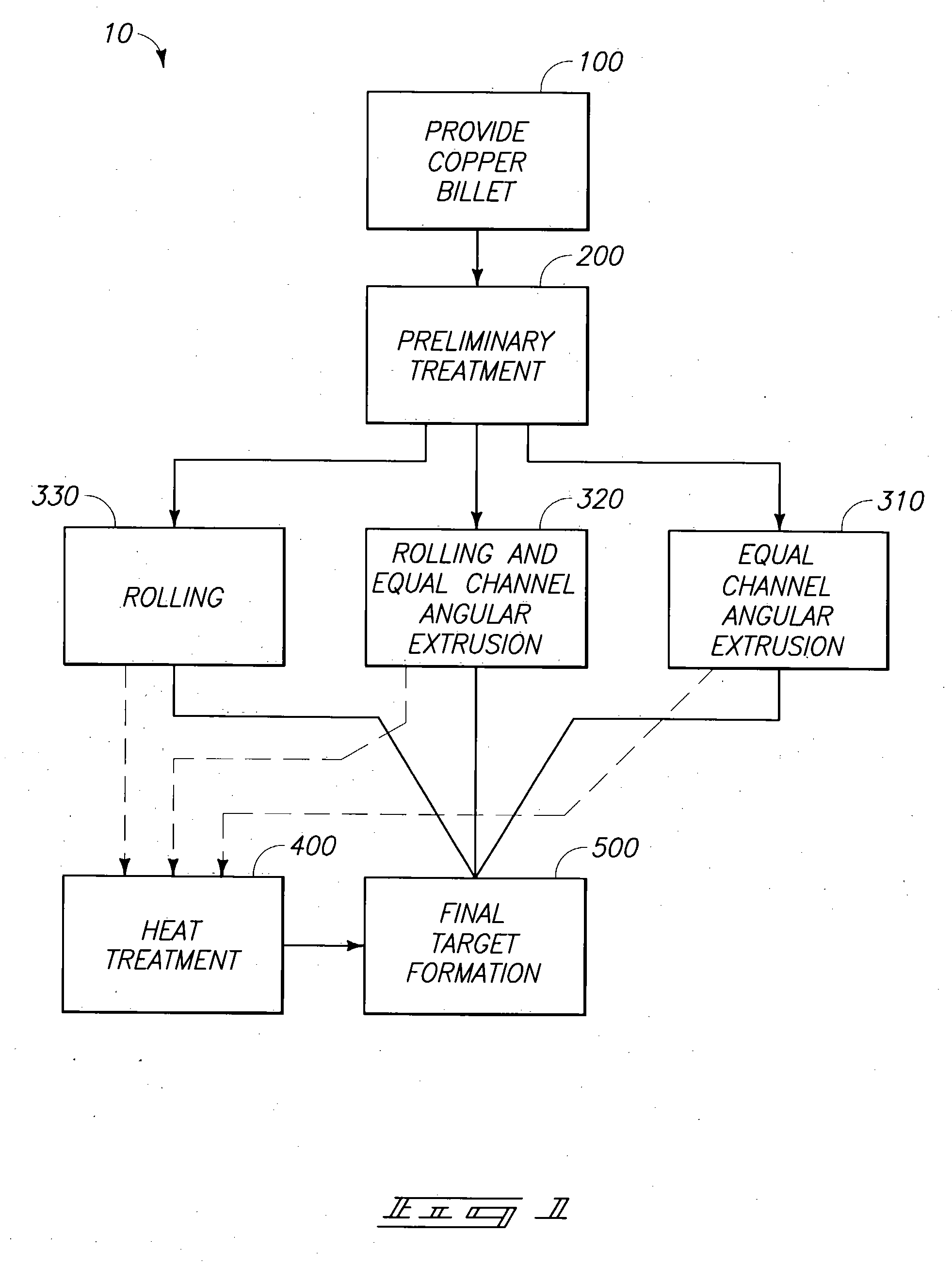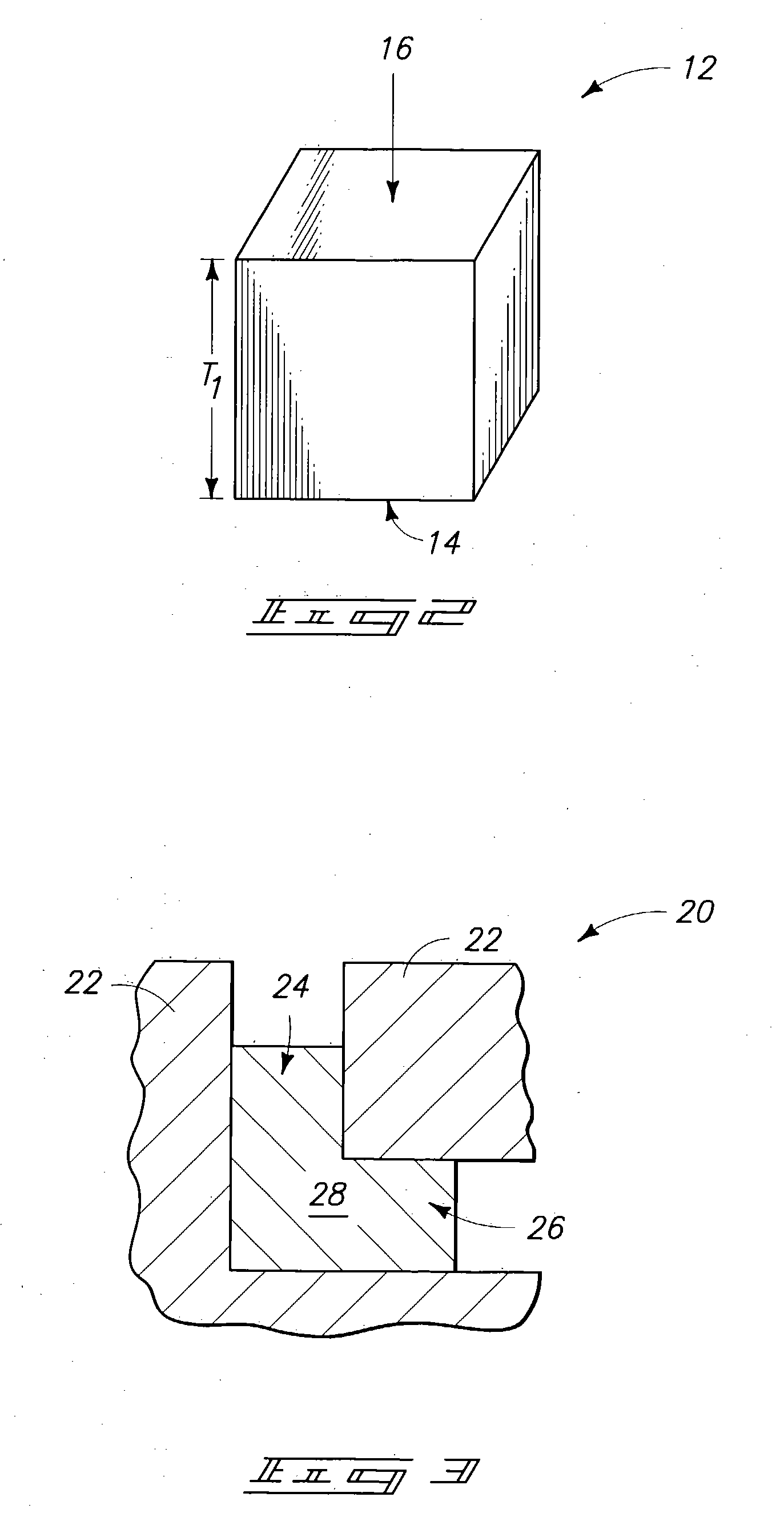Copper sputtering targets and methods of forming copper sputtering targets
a technology of copper sputtering and copper sputtering target, which is applied in the direction of vacuum evaporation coating, transportation and packaging, coatings, etc., can solve the problems of increasing the overall average grain size, non-uniform microstructure, and relatively low yield strength
- Summary
- Abstract
- Description
- Claims
- Application Information
AI Technical Summary
Problems solved by technology
Method used
Image
Examples
example 2
Production of Copper Alloy Monolithic Sputtering Targets
[0089] Copper alloy billets having less than 10% of Ag, Sn, Al, or Ti are heated and maintained at a temperature of about 900.degree. F. to about 150.degree. F. for about 45 minutes. The billets are then hot forged to produce a final reduction of at least about 50%. Some of forged billets (depending on the alloy) are reheated for at least 10 minutes during the forging. After the final forging, the forged billets are immediately water quenched. The forged blocks are cold-rolled to a reduction of at least about 60% to form a blank which is recrystallized by heating to a temperature of from about 750.degree. F. to about 1200.degree. F. for 120 minutes. The recrystallized blanks are machined to form monolithic targets. Each of the targets has an average grain size of from about 15 microns to about 50 microns.
[0090] A specific target having copper alloyed with 0.3 atomic % Al was formed from a billet having a six inch diameter and a...
example 3
Production of Copper Alloy Diffusion Bonded Sputtering Targets
[0092] Copper alloy billets are provided and processed as described in example 2 with the exception that the cold-rolling was conducted to a reduction of at least about 50%. The cold-rolled blanks are bonded to CuCr backing plates at a bonding temperature of about 450.degree. C. for about 120 minutes. Recrystallization of the alloy occurs during the bonding. The bonded targets have a grain size of less than about 30 microns and a bond strength of up to about 30 ksi.
example 4
Production of High-Purity Copper Sputtering Targets Utilizing ECAE
[0093] Copper billets of cast copper having a purity of at least 99.9999% are provided. The high-purity copper billets are hot-forged at a temperature of least about 500.degree. C. with a reduction in height of at least about 40% to form forged blocks. The forged blocks are solutionized by heating the blocks to a temperature of at least about 500.degree. C. which is maintained for at least about 1 hour. The solutionized blocks are water quenched immediately after the heat treatment and are extruded utilizing from four to six passes of equal channel angular extrusion (ECAE) in accordance with route D (90 degree rotation of the blocks between successive passes) to produce a sub-micron microstructure. Intermediate annealing at a temperature of from about 125.degree. C. to about 225.degree. C., and for a time of at least about 1 hour is performed between some or all of the ECAE passes. The extruded high-purity copper bloc...
PUM
| Property | Measurement | Unit |
|---|---|---|
| grain size | aaaaa | aaaaa |
| yield strength | aaaaa | aaaaa |
| grain size | aaaaa | aaaaa |
Abstract
Description
Claims
Application Information
 Login to View More
Login to View More - R&D
- Intellectual Property
- Life Sciences
- Materials
- Tech Scout
- Unparalleled Data Quality
- Higher Quality Content
- 60% Fewer Hallucinations
Browse by: Latest US Patents, China's latest patents, Technical Efficacy Thesaurus, Application Domain, Technology Topic, Popular Technical Reports.
© 2025 PatSnap. All rights reserved.Legal|Privacy policy|Modern Slavery Act Transparency Statement|Sitemap|About US| Contact US: help@patsnap.com



